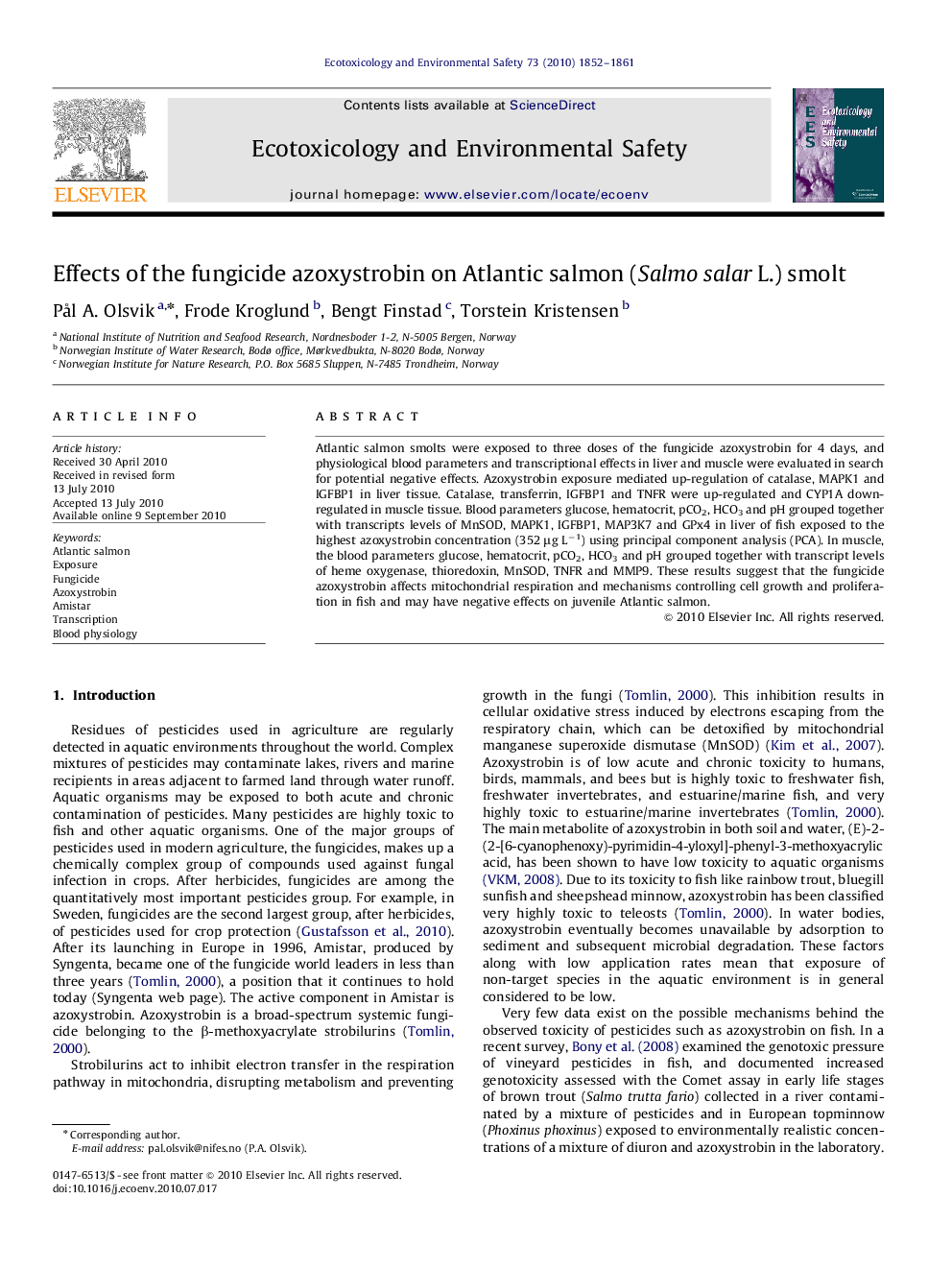| Article ID | Journal | Published Year | Pages | File Type |
|---|---|---|---|---|
| 4421563 | Ecotoxicology and Environmental Safety | 2010 | 10 Pages |
Atlantic salmon smolts were exposed to three doses of the fungicide azoxystrobin for 4 days, and physiological blood parameters and transcriptional effects in liver and muscle were evaluated in search for potential negative effects. Azoxystrobin exposure mediated up-regulation of catalase, MAPK1 and IGFBP1 in liver tissue. Catalase, transferrin, IGFBP1 and TNFR were up-regulated and CYP1A down-regulated in muscle tissue. Blood parameters glucose, hematocrit, pCO2, HCO3 and pH grouped together with transcripts levels of MnSOD, MAPK1, IGFBP1, MAP3K7 and GPx4 in liver of fish exposed to the highest azoxystrobin concentration (352 μg L−1) using principal component analysis (PCA). In muscle, the blood parameters glucose, hematocrit, pCO2, HCO3 and pH grouped together with transcript levels of heme oxygenase, thioredoxin, MnSOD, TNFR and MMP9. These results suggest that the fungicide azoxystrobin affects mitochondrial respiration and mechanisms controlling cell growth and proliferation in fish and may have negative effects on juvenile Atlantic salmon.
